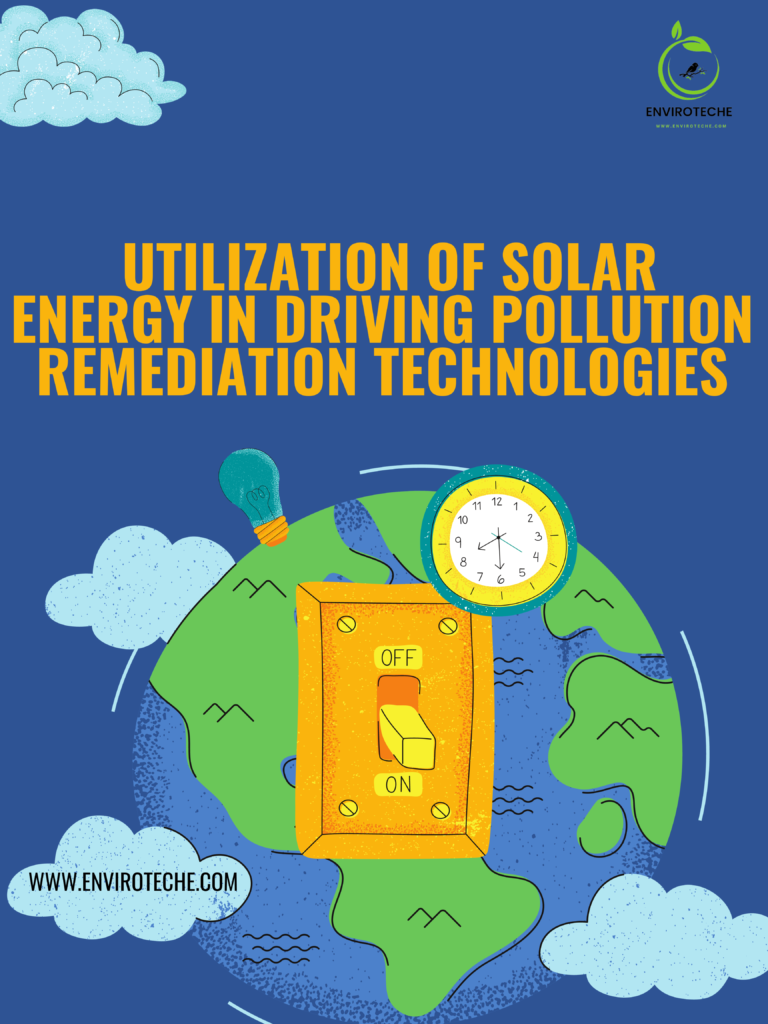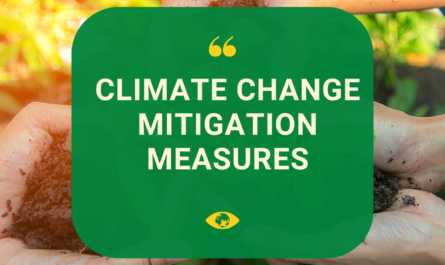Table of Contents

Solar Energy
The global population is facing a new category of environmental issues that are unparalleled in their intricacy and scope in terms of both space and time. These issues include ozone depletion, long-term organic pollutants, population, and species diminishes and extinctions, newly developed illnesses, antibiotic resistance, and interrelated social and ecological structures operating at multiple scales (Kinzig, Ehrlich, et al. 2013). The requirement for sustainable solutions is more important than ever at a time when worries about environmental degradation and climate change are on the rise.
Green Technology/Clean Technology
One possible way to deal with these issues is through sustainable technology, sometimes referred to as green technology as well as clean technology. Sustainable technology seeks to reduce the impact on the environment, conserve resources, and foster a more sustainable, more sustainable future by utilizing creativity and advances in a variety of fields. We will examine the idea of environmentally friendly technology and its benefits for the environment in this blog(Coley and Lemon 2009).
Solar Energy
Solar radiation has the ability to start chemical reactions, generate heat, and produce electricity.
The entire amount of solar energy occurring on Earth greatly exceeds the world’s energy demands, both now and in the future. If effectively exploited, this extremely distributed source can supply all of the world’s energy demands. Relative to the currently constrained fossil fuels coal, oil, and natural gas, solar energy is expected to become a more attractive alternative to fossil fuels in the twenty-first century due to its endless supply and non-polluting nature.
Utilization of Solar Energy
Small-scale uses of solar energy exist for objectives other than those mentioned above. In certain nations, for example, salt is made from seawater through evaporation using solar energy. Similar to this, solar-powered desalination units use heat—either directly or indirectly—to drive the desalination process from salt water to drinking water.
As a replacement energy source, solar technology has also been developed to facilitate the clean and renewable manufacturing of hydrogen. artificial intelligence. leaves are silicon-based appliances that use solar energy to break down water into hydrogen and oxygen, almost eliminating pollutants in the process. This mimics the process of photosynthesis. To make these devices more economical and efficient for use in industry, more work needs to be done.
Pollution Remediation Technologies
There are many different remediation technologies available, which can be divided into ex-situ and in-situ methods. Examples of these techniques include thermal methods, physical and chemical methods, and biological methods like premeditation and microbial degradation.
1. Remediation Technology for the contaminated soil
Remedial technologies come in a variety of forms and can be classified as either in-situ or ex-situ. the thermal methods, chemical and physical approaches, and biological approaches like microbial degradation and premeditation are a few examples of these techniques(Ye, Zeng et al. 2017). Remedial technologies come in a variety of forms and can be classified as either in-situ or ex-situ. thermal methods, chemical and physical approaches, and biological approaches like microbial degradation and premeditation are a few examples of these techniques.
2. Remediation Technology for Oil Contamination
Everywhere oil is extracted, there is a constant risk of contamination when combined with a lack of preparedness to handle environments contaminated by oil, particularly in remote or extreme locations like the areas closest to the equator, deep-sea regions, deserts, and wetlands. Although oil pollution is difficult to cure, petroleum, also known as hydrocarbon-degrading bacteria, evolved as a result of living close to the naturally occurring hydrocarbons from petroleum in the environment (Xu, Liu et al. 2018).
Waste materials produced by the chemical, pharmaceutical, food, and agricultural sectors have been tested for the presence of bacteria and employed accordingly. Using bacteria to remove environmental pollution has become a promising solution in recent years due to its low cost and ecologically benign characteristics.
3. Remediation Techniques for Heavy Metal-contaminated Soil
Over 20 million hectares of land worldwide are affected by heavy metal contamination, with current soil concentrations exceeding regulatory or Geo-baseline levels for As, Cadmium, Cr, mercury, lead, cobalt, copper, nickel, zinc, and Se. A variety of treatment techniques, such as surface restricting, encapsulation, land-filling, soil cleaning, soil laundering, electromagnetic mining, stabilization, solidification, the process of vitrification premeditation, and bio-remediation, have been developed to address heavy metal-contaminated sites.
By using the biological, chemical, physical, electrical power, and thermal remedy processes, these remediation techniques reduce the effects of contamination through containment, extraction/removal, and immobilization mechanisms(Liu, Li et al. 2018). These methods exhibit particular benefits, drawbacks, and suitability.
4. Solar-powered Air Purification Remediation Technique
It has long been a goal to use diffusive solar power through photo-catalytic reactions for fuel production and environmental purification. However, because of their relatively low energy, effective capture of visible-near-infrared (NIR) photons is a challenging task in photo-catalysis, particularly for those with a wavelength longer than 600 NM.
Solar to Chemical Conversion of Energy
In recent years, an increasing amount of research has been published on the use of near-infrared and visible light for solar-to-chemical energy conversion. According to Yang, Gao, et al. (2018), these investigations have profited from advancements in the creation of photo-active materials, the optimisation of photo-catalytic reaction systems, and recently identified mechanisms for long-wavelength photon activation. In air purification systems, photocatalysts fall into four basic categories: metal sulphides, metal-free substances, complex metal oxides, and binary metal oxidesThe crystallographic, optical, and electronic properties of these materials, as well as their performance, all have an impact on the range of applications that these materials can be used in.
5. Solar Driven Water Treatment Remediation Technique
Due to extensive agricultural exercises over the past few years, the agrochemical industry has grown significantly [1]. Chemicals known as pesticides are typically used to protect agricultural products by managing a wide range of insects and pests [2]. As a result of runoff from urban and agricultural areas, a variety of pesticide types pollute the air, soil, groundwater, and water on the surface, which is harmful to human health. The biggest threat and second-biggest contaminant of potable water is pesticides(Kaur and Kaur 2021). Due to their detrimental effects on microorganisms, wastewater-containing pesticides are rarely treated through biological methods, making bio-degradation impossible.
How to Remove Pesticides from Water
There are several treatment options available for removing pesticide contamination from surface and groundwater. At low pesticide concentrations, one of these advanced methods of oxidation (AOP), photo-oxidation in particular, seems to be particularly effective. Therefore, setting up efficient systems for treating wastewater and sewage is crucial in developing nations where a significant portion of the populace has a diminished attitude toward improved drinking water.
Conclusion
There are potentially many opportunities for rural households to use renewable energy sources because most of them lack access to contemporary power and use commercial fuel sparingly. There is a well-established correlation between indicators of rural development and energy access in rural areas. The use of renewable energy resources is closely related to issues related to social, economic, environmental, and energy security, including employment, poverty, income levels, and access to resources for agriculture, social services, and health.
FAQs
1. What is solar energy?
Ans: Solar energy is solar radiation that can ignite chemical reactions, produce heat, or produce electrical power.
2. What is green technology?
Ans: One possible way to deal with environmental issues is through sustainable technology referred to as green technology or clean technology.
3. How solar energy is utilized?
Ans: As a replacement energy source, solar technology has also been developed to facilitate the clean and renewable manufacturing of hydrogen. artificial intelligence. leaves are silicon-based appliances that use solar energy to break down water into hydrogen and oxygen, almost eliminating pollutants in the process.
4. Which pollution remediation technologies are available to conserve the environment?
Ans: Pollution remediation technologies available to conserve the environment are as follows:
1. Remediation Technology for the contaminated soil
2. Remediation Technology for Oil Contamination
3. Remediation Techniques for Heavy Metal-contaminated Soil
4. Solar-powered Air Purification Remediation Technique
5. Solar Driven Water Treatment Remediation Technique
5. How pesticides can be removed from water?
Ans: There are several treatment options available for removing pesticide contamination from surface and groundwater. At low pesticide concentrations, one of these advanced methods of oxidation (AOP), photo-oxidation in particular, seems to be particularly effective.
6. How solar energy is converted into chemical energy?
Ans: The green pigment chlorophyll helps green plants absorb solar radiation. Through the process of photosynthesis, this energy is used to synthesize simple sugars like glucose. As a result, light energy from the solar system is transformed into chemical energy during photosynthesis.
References
Coley, F. J. S. and M. Lemon (2009). “Exploring the design and perceived benefit of sustainable solutions: a review.” Journal of Engineering Design 20(6): 543-554.
Kaur, R. and H. Kaur (2021). “Solar driven photocatalysis-an efficient method for removal of pesticides from water and wastewater.” Biointerface Res. Appl. Chem 11: 9071-9084.
Kinzig, A. P., et al. (2013). “Social norms and global environmental challenges: the complex interaction of behaviors, values, and policy.” BioScience 63(3): 164-175.
Liu, L., et al. (2018). “Remediation techniques for heavy metal-contaminated soils: Principles and applicability.” Science of the total environment 633: 206-219.
Xu, X., et al. (2018). “Petroleum hydrocarbon-degrading bacteria for the remediation of oil pollution under aerobic conditions: a prospective analysis.” Frontiers in Microbiology 9: 2885.
Yang, M. Q., et al. (2018). “Visible‐to‐NIR photon harvesting: progressive engineering of catalysts for solar‐powered environmental purification and fuel production.” Advanced Materials 30(47): 1802894. Solar Energy Solar Energy
Ye, S., et al. (2017). “Biological technologies for the remediation of co-contaminated soil.” Critical reviews in biotechnology 37(8): 1062-1076.
Author Detail
Razia Yasin, Ayesha Batool
Department of Chemistry, University of Agriculture Faisalabad, Sub-Campus Toba Tek Singh
Check Other Scholarships:

